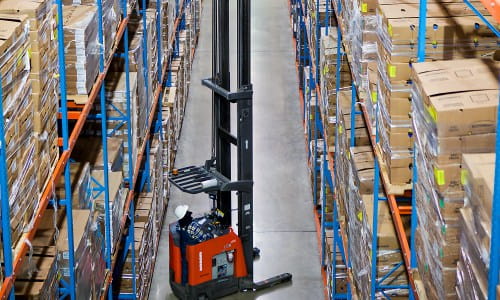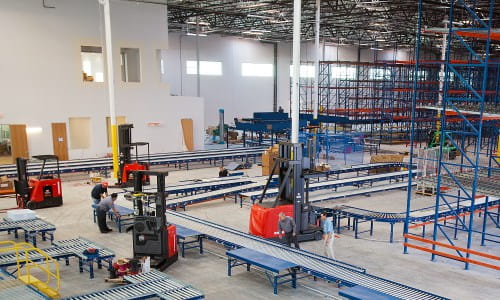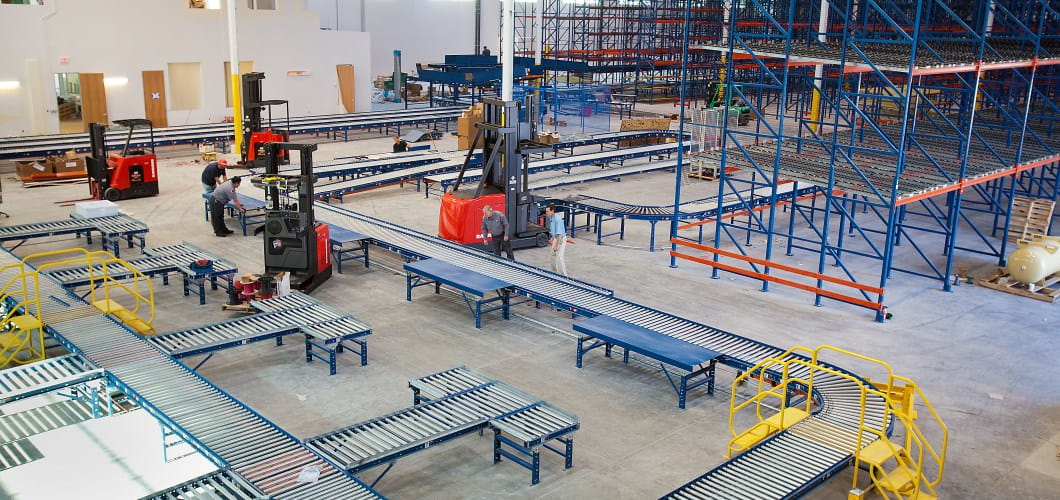-

A Unique Range of Storage Solutions
Johnston Equipment offers efficient, high-quality automated storage systems. From horizontal and vertical carousel storage systems to vertical lift storage system modules including BT Radio Shuttles and Kardex Remstar vertical-lift modules (VLM). You can be assured we will build the perfect solution for your warehouse, production plant or distribution centre in order to improve order-picking, productivity, ergonomics and safety while optimizing your valuable warehouse storage space. -

Optimize Your Warehouse
Our flexible and custom software packages can be adjusted to your needs and integrated into your existing ERP. This will enable you to make the most of the space you have, increase order selection productivity, and improve workplace ergonomics. Rely on our expertise to support the design, deployment, and ongoing maintenance of your custom automated solution.
Contact Us For More Information
Complete the contact form below and our Storage System Specialist will contact you to discuss how we can help you store your products.
Please fix the following errors and resubmit.
Frequently Asked Questions
-
How do you design a warehouse rack?
There are many factors to consider when designing a warehouse rack storage system. Key factors are selectivity, accessibility, locations, safety, pick velocity, inventory, and future growth. The design usually begins with the product and the load size, the number of pallets to be stored, the order picking process, and the building’s storage area dimensions. Our experienced sales professionals meet with you to understand the needs of your organization and design the ideal system for your current and future business requirements. -
What are the different types of racks available?
Pallet Racks may be constructed using roll formed steel components, structural steel components or a combination of the two. Roll-formed steel racking is the most cost-effective pallet rack system, where coils of sheet steel are punched and formed into unique frame post and beam profiles. Structural Component racking is priced higher than Roll Formed, however it is far more robust and less prone to damage, due to its sturdy channel construction. Finally, where a rack system consists of Roll Formed and Structural Steel Components, structural end-frames and roll-formed beams are used in combination. Whatever your needs, we have the solution for you. -
What are the different kinds of racking systems?
There are various types of racking systems which can each be tailored to your specific needs and applications. These systems range from low to high density, from FIFO to LIFO, and everything in between. We regularly design storage systems from single selective racking, double-deep, drive-in, push-back, pallet flow, carton flow… whatever your space and your needs are, we’ll properly design the racking system to optimize every cubic foot of your warehouse. -
How much does warehouse racking cost?
As there are several types of storage rack systems available, prices will vary widely based on your needs and selection. As a general rule of thumb, costs vary from $75 to $450 per pallet position, depending on the specific rack type. -
Should Pallet Racking be bolted down?
Pallet racking requires firm anchor points. Anchor bolts are used to secure storage racks to the concrete floor and are designed to resist uplift forces. They not only ensure that the geometry of the rack is maintained but also safeguard against minor impact. Specifying the correct anchor bolts is critical for the installation of your racking system. -
What is the leading cause of warehouse rack system failures?
Storage rack failures are typically caused by one of more of the following:
1. Damaged Rack Components
2. Loading Racks beyond Allowable Limits
3. Modified / Reconfigured Racks without Proper Evaluation
4. Inadequate Forklift Operator Training
5. Intermixing Rack Components from Various Manufacturers
6. Change in Operation or Material Handling Equipment without Consideration of Rack Interaction
To minimize the risk of a storage rack collapse, one should always purchase rack systems that have been designed to applicable standards, that are installed by competent personnel, and that are used and maintained in accordance with the rack manufacturer’s instructions.
Any modifications to a rack system must be evaluated and approved by the original rack manufacturer or a Professional Engineer. -
Are rack inspections required?
Jurisdictions across the country enforce regulations, such as the Occupational Health and Safety Act (OHSA), require employers to maintain a safe workplace. This includes ensuring that structures are capable of supporting the loads applied to them and that equipment is maintained in good condition.
Regular rack inspections are required to identify any visible damage or other conditions that could affect the load capacity or performance of the rack structure. The frequency of rack inspections must, as a minimum, ensure compliance with local regulations.




